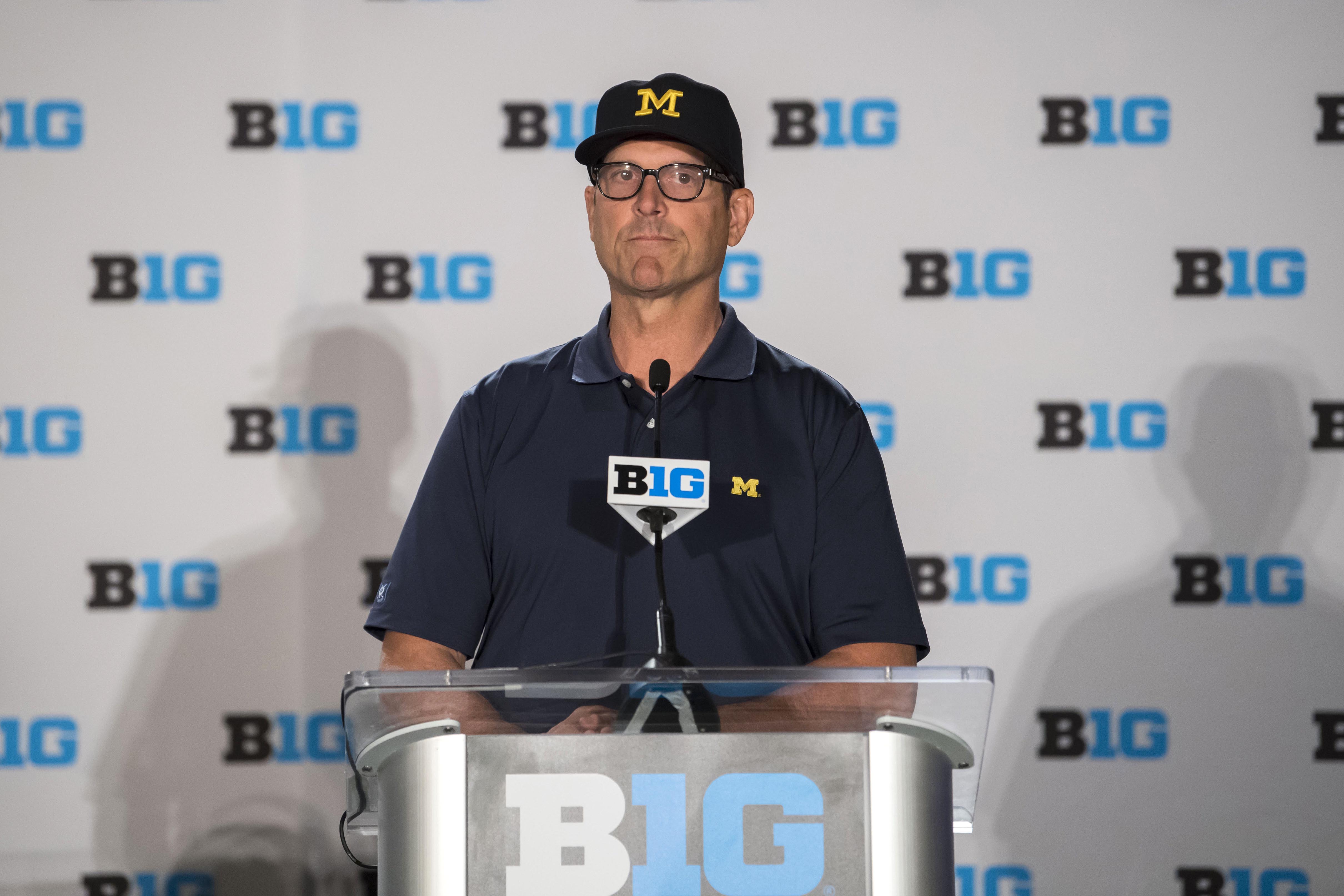Ad Disclosure

Michigan won the Big Ten championship in 1950 (clinched in the legendary Snow Game against Ohio State) and didn’t win it again until 1964. That 14-year gap is the longest between conference titles in program history.
Oh, and if you don’t know the story of the Snow Bowl, here you go:

Coaches Bo Schembechler, Gary Moeller and Lloyd Carr kept the trophy cabinet bulging in Ann Arbor. For the lifetimes of most folks reading this, it didn’t seem likely that the Wolverines would ever again go as many as 14 years without sitting atop the B1G.
But here we are.
Michigan last won a share of the Big Ten title in 2004, under Carr. The Wolverines last captured the championship outright in 2003. That was so long ago that a B1G championship game was several years away. Heck, the abbreviation “B1G” didn’t exist yet. Even more irksome for the school with a record 42 Big Ten titles, their archrivals in Columbus have captured at least a share of the league’s crown seven times since 2004.
That 14-year gap, and counting, illustrates the kind of pressure coach Jim Harbaugh is under at a tradition-laden school like Michigan. He should know because he quarterbacked the 1986 Wolverines to a share of the Big Ten championship.
But the Wolverines enter this season with a realistic hope of ending their program’s skid. If Shea Patterson can bring Michigan salvation at last at quarterback, the Wolverines have a chance.
The Ole Miss transfer tops our list of reasons that the Wolverines can contend in the brutal B1G East Division. This is part of a continuing series; we previously highlighted Wisconsin, Ohio State and Michigan State. Here are 5 reasons Michigan can win the B1G:
Patterson’s promise
It is still not even certain that he will win the job. At least according to Harbaugh, who of course sees no advantage in naming a starter yet among a four-person field of contenders. But assuming it is Patterson, the junior transfer showed flashes of big-time ability at Mississippi before an injury derailed his 2017 campaign. He passed for 300 yards or more in five of his first six starts for the Rebels last season, and the only time he didn’t was against Alabama. He is back from his season-ending right knee injury, suffered in October against LSU, and everybody but Harbaugh seems ready to declare Patterson as Michigan’s starter.

Help behind QB
Whoever starts at quarterback will have help in the backfield. Karan Higdon and Chris Evans combined to rush for 1,681 yards and 17 touchdowns in 2017. The two bring one of the most potent running back combos in the Big Ten and will help settle an unproven offensive line as well as the quarterback.
That fierce D-line
Defensive ends Rashan Gary and Chase Winovich return to a defense which allowed 271 yards a game last season, third in the nation. And Aubrey Solomon, a former 5-star prospect, should help clog up the middle at defensive tackle. Gary is listed third on NFL Draft guru Todd McShay’s prospects for the 2019 draft, assuming the 6-foot-5, 281-pound junior passes on his final season of college eligibility.

Defensive backs can back up stats
The secondary brings back all four starters from a unit which led the nation in pass defense last season at 150.1 yards allowed per game. Cornerbacks Lavert Hill and David Long are All-B1G first-team selections by Athlon’s and safeties Josh Metellus and Tyree Kinnel are also strong at their positions.
Shot at early momentum
Michigan opens its season Sept. 1 at Notre Dame. Take this with a grain of salt — or a whole shaker full — but the Fighting Irish start the season in the top four of ESPN’s College Football Playoff predictor. By any measure or metric, a win in South Bend would propel Michigan into the national college football conversation pretty quickly. And because it would not affect the conference race, even a loss would not dent the Wolverines that badly.
Longtime newspaper veteran Jim Tomlin is a writer and editor for saturdaytradition.com and saturdaydownsouth.com.